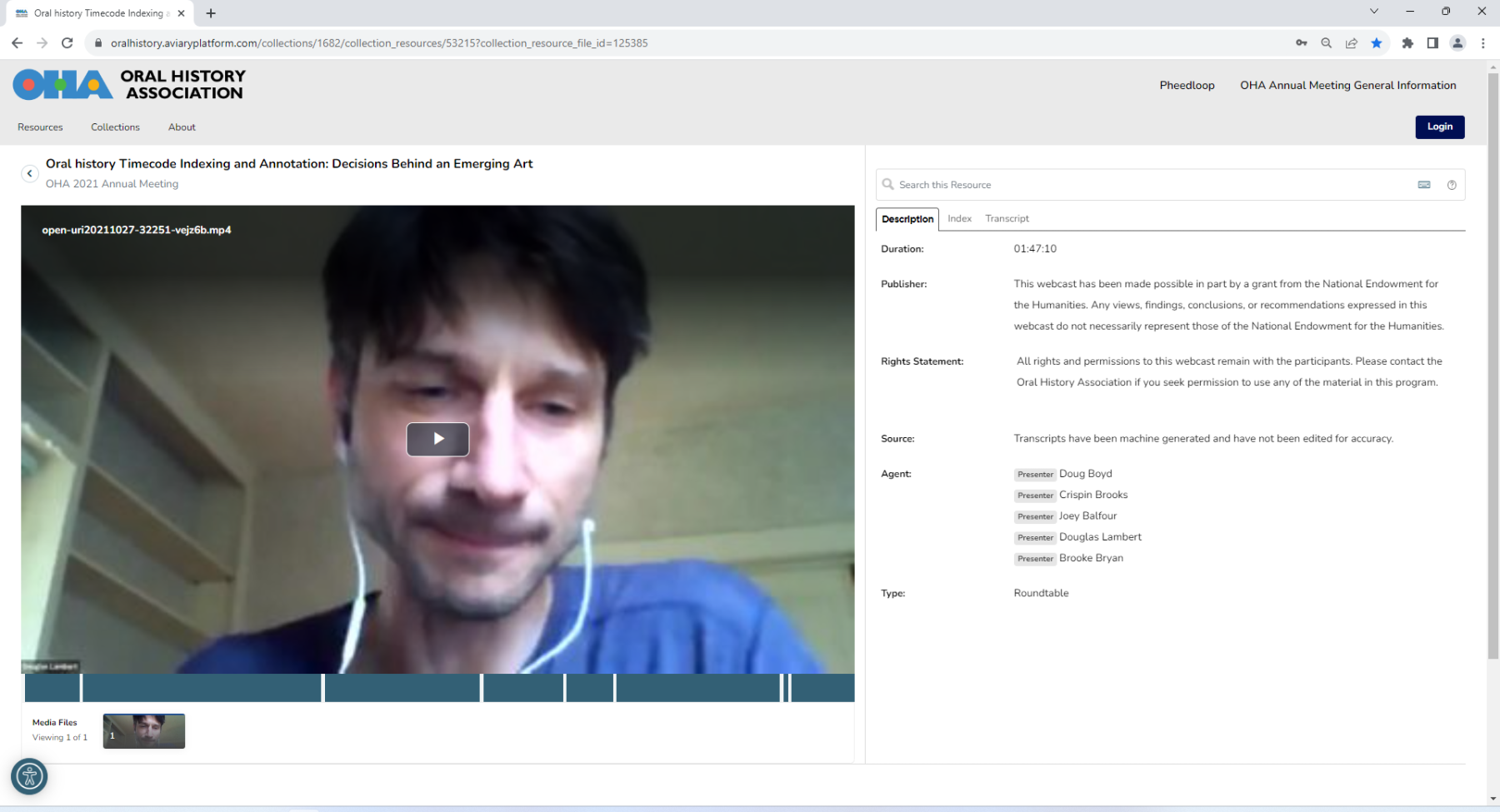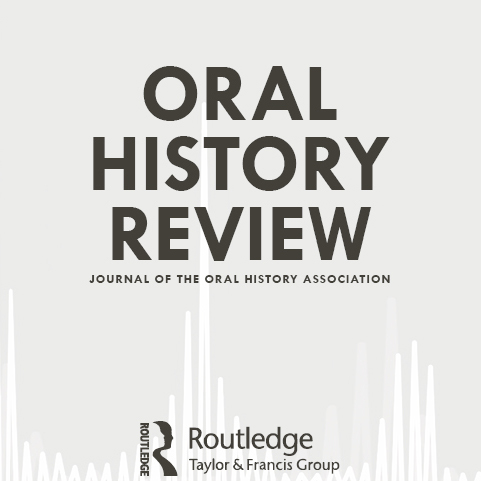Doug Lambert on Oral History Indexing
Supplemental content for the Oral History Review article “Oral History Indexing”
By Douglas Lambert
In 2023, I wrote about a concept I coined called Oral History Indexing (OHI) in an essay for the Oral History Review (Vol. 50 (2) Summer/Fall issue). OHI is a form of audio/video (A/V) content management that developed over a period of 25 years in the oral history field—an enterprise predicated on digital environments and the ability to link text descriptions and media segments electronically. Several institutions have taken leadership in OHI, creating highly organized multimedia environments that make interview recordings more accessible to users online. In the article, I summarize several OHI practices based on presentations made at an Oral History Association (OHA) annual meeting roundtable session in 2021—a remote/online conference recorded via Zoom. This is a guide to that video document, which the OHA made available along with many other recordings from 2021-2022 via the Aviary platform.
My OHA 2021 session event and video, titled Oral History Timecode Indexing and Annotation, features the original roundtable presentations cited in my article, and serves as a supplement to the article through additional OHI-related content. The Aviary landing page where the video is hosted offers several means of access to this lengthy content (1hr 47min), allowing visitors to navigate and directly experience forms of indexing through an active, multimedia, timecode-linked website. Below I present three indexes I created for the video—the print form appearing in the OHR article and two electronic index formats in Aviary. I also briefly describe the two timecoded transcripts associated with my video, created through Automatic Speech Recognition (ASR) and made available by OHA for all the 2021-2022 sessions. Browsing, searching, and otherwise clicking around these multimedia environments is the ideal way to understand more profoundly the phenomena I discussed in the article, from the variety of the incarnations possible for indexing, to the emerging role of ASR in oral history.


